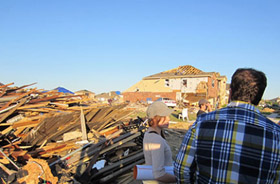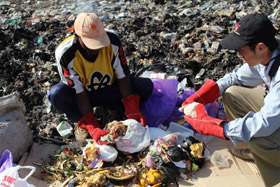Was MIT Robbed in this School Ranking?
-
-
slice.mit.edu
- 1
Filed Under
Recommended

No surprise, MIT has made another school ranking list. This time it's Washington Monthly's assessment of colleges and universities based on their contributions to the public good. Schools are judged in three categories: Social Mobility (recruiting and graduating low-income students), Research (producing cutting-edge scholarship and PhDs), and Service (encouraging students to give something back to their country). But unlike lists in which we finish at or near the top, MIT ranked 15th overall, with a combined score of 77 out of 100.
Now, I'm not saying that being number 15 is anything to sneeze at, and we rank very high in the Research category. But Service…not so much. At least according to Washington Monthly.
The Service category looks at five elements:
- the number of alumni who go on to serve in the Peace Corps, relative to school size
- the percentage of students who serve in ROTC
- the percentage of funds in federal work-study money that goes to community service (versus non-community service)
- a combined measure of the number of students participating in community service and the total number of service hours performed, both relative to school size
- and a combined measure of the number of staff supporting community service relative to the total number of staff, the number of academic courses that incorporate service relative to school size, and whether the institution provides scholarships for community service.
But if that's the case, then why look at Peace Corps volunteers who work in developing countries? The Peace Corps website gives an answer, stating that the volunteers' purpose is to "serve their country in the cause of peace by living and working in developing countries." So service on a broader geographic scale is in some way important to this latest school assessment. But apparently, only the Peace Corps is relevant international work.

In the Washington Monthly list, MIT ranks 150th for community service participation and hours served and 177th in the number of alumni who go on to serve in the Peace Corps. Though there are indeed programs that help neighborhoods surrounding campus, MIT's very mission is to serve the world, not just Cambridge, and our score certainly doesn't illustrate the worldwide efforts of MIT students and alumni.
The MIT Public Service Center awards grants to allow students to integrate service with education both nationally and abroad. The PSC also runs the MIT IDEAS Global Challenge, which is a competition that rewards public-service innovators. Teams are made up of students who can be joined by alumni and other MIT community members.
Take a look at what some of the Global Challenge teams have been up to. The Huffington Post recently profiled team Maa-Bara for developing aquaponics in Nigeria for a new supply of food. Team Essmart won the $50K grand prize at the Dell Social Innovation Competition to further its innovative work on supply chains in India. And team Recovers.org, which built a platform to structure data to improve local disaster relief, was granted $340K from the Knight Foundation, one of only six innovative media ventures to win such funding. Read more updates. In case you're interested, alumni can offer their skills to the Global Challenge, sponsor teams, help solve a proposed problem, and more.
School rankings are always to be taken with a grain of salt, but with so many students and members of the MIT community involved in making a lasting impact in communities all over the world (including in America), it seems we should get a little bit more credit.








Comments
kate mytty
Mon, 09/10/2012 9:43am
Thanks for the insights, Amy. It's interesting to see the rankings broken down into the numbers behind them. To wit, the measures of how much service is impacting communities are not present in the rankings; it'd be fascinating to see how integral universities have been in positively affecting the communities with which they work - rather than focusing on the simple measurement of hours invested, ROTC and Peace Corps enrollments and monies invested.